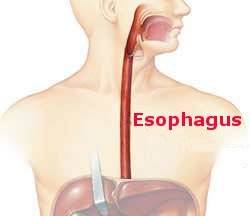Cancer and fluid in the chest. When a surgeon looks into a chest the initial view reveals only a lung. It seems to take all the room. That’s because it’s full of air. However, while it touches the inside of the chest wall it’s not attached. The lung is quite Read More
Author: alexlittle@att.net
Fad or the future? In my last blog I touted the benefits of minimally invasive chest surgery, thoracoscopy, which provides as good outcomes as open surgery but causes much less pain and allows patients to recover quicker. So-called robotic surgery is felt by some surgeons to be the next advance Read More
Less is more…beneficial. For years surgeons had only one option for an operation to provide access to internal organs: open surgery performed through a usually generous incision through skin and muscle. In a chest operation the access procedure to get inside a chest is called a thoracotomy. It begins with Read More
Considerations in choosing a surgeon. Operations for esophageal cancer are performed by general thoracic surgeons like me (so you know my prejudice), surgical oncologists and general surgeons. Who should operate on you? Appropriate considerations will resemble my previous thoughts for lung cancer surgery. The experience the surgeon had in Read More
Making life better. Not all cancers are curable. When this is the case subjecting the patient to a major operation such as an esophagectomy with its risks of significant morbidity and even mortality is inappropriate. Happily, there are interventions that can improve the quality of life and extend it. Both Read More
What is the goal of an esophagectomy? The answer may seem obvious, but it was not always so. As recently as when I began my practice in the early 1980s the hoped-for outcome was that the patient’s dysphagia would be relieved. Cure of the cancer was a welcome result but Read More
Progress is made. Despite Torek’s “successful” esophagectomy discussed in the previous blog, few such operations were subsequently performed. In 1933 the British surgeon Grey-Turner introduced an alternative technique for esophagectomy. He made incisions in the neck and abdomen and, sliding his hands down and up respectively, freed and removed the Read More
Into the chest. The chest is the home of most of the esophagus, so it is the location of most cancers. Operating in the chest was impossible until sufficient anesthesia capabilities were established and the lungs could be ventilated. No awake and sentient patient could tolerate the pain of a Read More
A challenge for surgeons. The esophagus starts in the neck, traverses the chest, and ends in the abdomen where it enters the stomach. Surgeons may need to enter up to all three anatomic areas to perform an adequate cancer operation. In addition, the esophagus is in close proximity to the Read More
Esophageal cancer. There are different types and locations The esophagus is the “tube” that food slides through to get from the mouth to the stomach. It’s a biologic conveyer belt. No digestion, just transportation. Cancer of the esophagus has been known for millennia to be very lethal. It arises inside Read More

